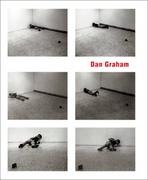During the 1950s and 1960s, family life is lived in isolated suburban houses.
The family is linked to the outside world through radio, tv and the car.
It is by these means that teenagers communicate the covert massage
of rock's new codes.
The rock club and concert performance are like a church,
sanctuaries against the adult world.
Electronic instruments unleash anarchic energies for the mass.
The rock star sacrifices his body and life against the regime of work:
by living his life and performing at the edge,
he transcends the values of everyday work.
His transcendence is achieved at the price of the sacrifice
of his ability to become an adult. He must die, or fall from fame.
By the late 1960s rock groups live as extended families
in large urban houses, travelling to concerts in buses
outfitted for collective living.
At outdoor rock festivals, the fans live together in tents.
Originally, rock expressed male, adolescent sexuality.
The electrified guitar, microphone-projected voice and body
of the performer became phallic symbols.
This was challenged by Jim Morrison in his notorious Maiami performance
in which he allegedly exposed himself.
He had come to believe that rock, having become big business, was dead.
The exposure of his penis was read by the public as a pathetic gesture;
for Morrison, it meant the death of his prowess as a rock star.
By showing his (pathetic) penis, instead of making his body and performance
phallic, he wished to question the mystique of rock as spectacle.
Morrison's earlier performanced had taken the form of the ritual.
In this 'death of rock' ritual, he wanted to re-enact the castration complex.
Through the star's own emasculation, he expressed his desire to see rock
bring about the destruction of the Oedipal order.
Patti Smith took Morrison's 'negative trip' and attemped to make it
- and rock - into a positive social good.
She is the first to make explicit the truth that rock is a religion.
Patti believed that the role of the female prepatriarchal
Egyptian priestess could be merged with the 'tent revivalists'
talking in tougues' to create a new rock language, which
would be neither male nor female.
The religion of the 1950s teenager and the counterculture of the 1960s
is adopted by 'Pop' artists who propose an end to the religion of
'art for art's sake.'
Patti takes this one step further: rock as an art form
which will come to encompass poetry, painting and sculpture.
If art is only a business, as Warhol suggests, then music becomes
the more communal, transcendental emotion which art now denies.
Dan Graham "Rock Religion,'in Scenes and Conventions In
Architecture by Artists, 1983 , pp.80〜81.
|
|
|
|
コメント(2)
1950年代および1960年代において、人々は個々に
離れた郊外にある住宅で家庭生活を営みはじめた。
家庭はラジオやテレビ、自動車によって外の世界とつながる。
これらの手段を通じ、ティーンエイジャーたちは新しく、
ロックという暗号を用いて秘密のメッセージを伝え合うのだ。
クラブやコンサートは既存の体制(大人の世界)に対する、
あたかも教会或いは聖域のようなものであった。
エレキ楽器は大衆のアナーキーなエネルギーを解き放ち、
ロックスターは肉体と人生を犠牲にして労働の体系に抵抗する。
彼らは崖っぷちの日々を送り、毎日における労働という価値、
そうした従来然としたものを超越してゆくのだ。
その超越の代償として、彼らは大人になることそのものを
投げ打つ。つまり、彼らは若くして死ななければならない。
そうでなければ彼らの名声は地に堕ちてしまうことになる。
ロック・グループは1960年代末に到っては郊外の大きな住宅で
大きな家族のように生活し、集団で暮らせるように整備された
バスに乗ってコンサートツアーを行うようになってゆく。
野外ロックフェスタの際にはファンも一緒に生活していた。
元始、ロックは青年男子における性を象徴する存在だった。
エレキギターやマイクで拡声された声、演奏者の肉体は
男性自身そのものを意味していた。
ジム・モリスンがマイアミで行った悪名高いあの行為も、
彼の口にすれば¨自分自身¨の表現に過ぎないのだ。
ロックが巨大なビジネスになるにつれて死んでゆく、
彼はそうとさえ考えるようにもなっていた。
人々はペニスを晒した彼の行為を哀れみを持って捉えた。
モリスンにとって、あの行為はロックスターとしての勇気、
己における勇ましさの死を意味していたのだった。
彼はその哀れなペニスを見せることで、肉体や演奏自体を
男性自身を象徴してみせるのではなく、見世物となった
ロックの魔力に疑問を投じたかったのである。
初期におけるモリスンのパフォーマンスは儀式的でさえあった。
こうした「ロックの死」としての儀式を通じることで、
彼は去勢されたコンプレックスを再演したかったのだ。
つまり、スターが自分自身を去勢してみせることで、
ロックがオイディプス的な秩序を壊す様子を見てみたい、
という自らの切望をも示したと言えよう。
パティ・スミスはモリスンの「後ろ向きな逸脱」に注目し、
それとロックとをより社会に裨益するものへ役立てようとする。
彼女はロックを宗教として世に謳った最初の人間でもあった。
パティは父権的なエジプトにおける尼僧のような役割と、
「テントの信仰主義者(本論01を参照)における口ごもり」
とを組み合わせ、男性的でも女性的でもない、あたらしい
ロックの言語を生み出そうという信念を持っていた。
「ポップ」なアーティストたちは1950年代のティーンエイジャーの宗教と、
1960年代におけるカウンターカルチャー(反動的文化)とを取り入れ、
「芸術のための芸術」という信仰にひとつの終わりを告げる。
パティはそれをもう一歩進め、詩や絵画や彫刻をも含めて、
アートの一形態・一様式としてのロックを考えていた。
もしウォーホールが言ったようにアートが単なるビジネス、
商売のひとつに過ぎないとしても、音楽はアートにおいて
否定されうる共同体的、かつ超越的な感動を持ち得たのだ。
離れた郊外にある住宅で家庭生活を営みはじめた。
家庭はラジオやテレビ、自動車によって外の世界とつながる。
これらの手段を通じ、ティーンエイジャーたちは新しく、
ロックという暗号を用いて秘密のメッセージを伝え合うのだ。
クラブやコンサートは既存の体制(大人の世界)に対する、
あたかも教会或いは聖域のようなものであった。
エレキ楽器は大衆のアナーキーなエネルギーを解き放ち、
ロックスターは肉体と人生を犠牲にして労働の体系に抵抗する。
彼らは崖っぷちの日々を送り、毎日における労働という価値、
そうした従来然としたものを超越してゆくのだ。
その超越の代償として、彼らは大人になることそのものを
投げ打つ。つまり、彼らは若くして死ななければならない。
そうでなければ彼らの名声は地に堕ちてしまうことになる。
ロック・グループは1960年代末に到っては郊外の大きな住宅で
大きな家族のように生活し、集団で暮らせるように整備された
バスに乗ってコンサートツアーを行うようになってゆく。
野外ロックフェスタの際にはファンも一緒に生活していた。
元始、ロックは青年男子における性を象徴する存在だった。
エレキギターやマイクで拡声された声、演奏者の肉体は
男性自身そのものを意味していた。
ジム・モリスンがマイアミで行った悪名高いあの行為も、
彼の口にすれば¨自分自身¨の表現に過ぎないのだ。
ロックが巨大なビジネスになるにつれて死んでゆく、
彼はそうとさえ考えるようにもなっていた。
人々はペニスを晒した彼の行為を哀れみを持って捉えた。
モリスンにとって、あの行為はロックスターとしての勇気、
己における勇ましさの死を意味していたのだった。
彼はその哀れなペニスを見せることで、肉体や演奏自体を
男性自身を象徴してみせるのではなく、見世物となった
ロックの魔力に疑問を投じたかったのである。
初期におけるモリスンのパフォーマンスは儀式的でさえあった。
こうした「ロックの死」としての儀式を通じることで、
彼は去勢されたコンプレックスを再演したかったのだ。
つまり、スターが自分自身を去勢してみせることで、
ロックがオイディプス的な秩序を壊す様子を見てみたい、
という自らの切望をも示したと言えよう。
パティ・スミスはモリスンの「後ろ向きな逸脱」に注目し、
それとロックとをより社会に裨益するものへ役立てようとする。
彼女はロックを宗教として世に謳った最初の人間でもあった。
パティは父権的なエジプトにおける尼僧のような役割と、
「テントの信仰主義者(本論01を参照)における口ごもり」
とを組み合わせ、男性的でも女性的でもない、あたらしい
ロックの言語を生み出そうという信念を持っていた。
「ポップ」なアーティストたちは1950年代のティーンエイジャーの宗教と、
1960年代におけるカウンターカルチャー(反動的文化)とを取り入れ、
「芸術のための芸術」という信仰にひとつの終わりを告げる。
パティはそれをもう一歩進め、詩や絵画や彫刻をも含めて、
アートの一形態・一様式としてのロックを考えていた。
もしウォーホールが言ったようにアートが単なるビジネス、
商売のひとつに過ぎないとしても、音楽はアートにおいて
否定されうる共同体的、かつ超越的な感動を持ち得たのだ。
- mixiユーザー
- ログインしてコメントしよう!
|
|
|
|
Dan Graham 更新情報
-
最新のイベント
-
まだ何もありません
-
-
最新のアンケート
-
まだ何もありません
-
Dan Grahamのメンバーはこんなコミュニティにも参加しています
人気コミュニティランキング
- 1位
- お洒落な女の子が好き
- 89948人
- 2位
- マイミク募集はここで。
- 89401人
- 3位
- 暮らしを楽しむ
- 75432人
























